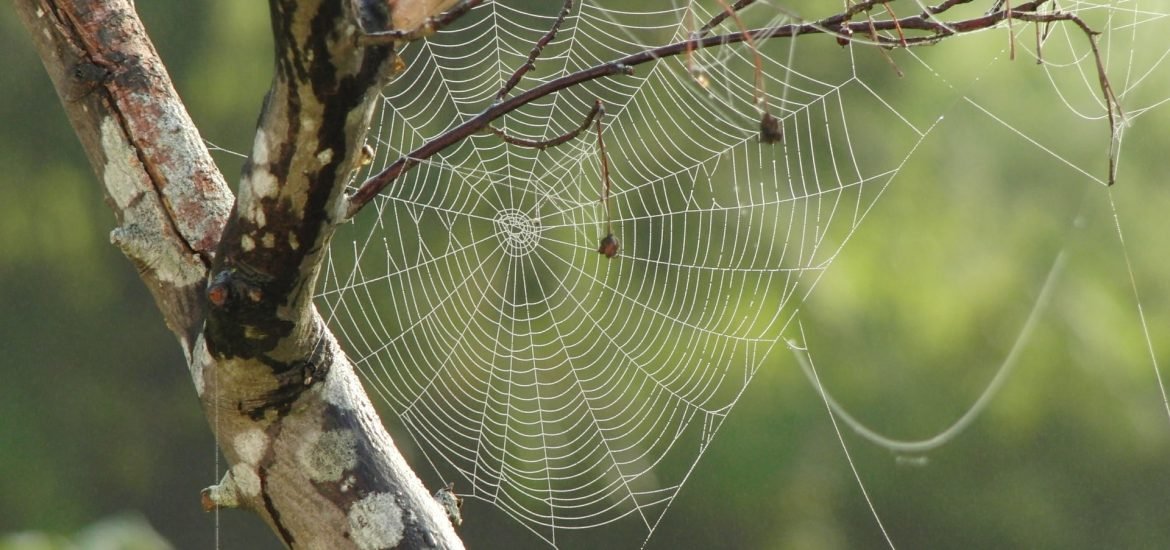
Spiders are capable of gliding through the air using Earth’s electric field, according to new research.
Thanks to an ability known as ballooning, spiders have been found as far as 1,600 kilometres out to sea and four kilometres up in the air, reports The Atlantic. This ability has long perplexed scientists – it was once thought that the wind helped propel the spiders through the air, but spiders are capable of taking off even on days with no wind.
Now, researchers at the University of Bristol in England have found that during the ballooning process, spiders take advantage of Earth’s electric field to propel themselves into the air. The findings were published on Thursday in the journal Current Biology.
Although scientists have known for some time that spider silk is an effective electric insulator, they did not know that spiders are capable of detecting and responding to electric fields until now. The discovery makes spiders the second known species of arthropods – the other being bees – to detect and utilise Earth’s electric field.
“Many spiders balloon using multiple strands of silk that splay out in a fan-like shape, which suggests that there must be a repelling electrostatic force involved,” lead researcher Dr Erica Morley, an expert in sensory biophysics at the University of Bristol, explained in a statement.
To find out what types of forces might trigger ballooning among spiders and how the arachnids might sense these forces, researchers exposed spiders in the Linyphiidae family known as Erigone to controlled electric fields in the laboratory in the absence of wind and other environmental factors.
The electric fields used in the experiment were of similar strengths to those found in the atmosphere. Thunderstorms – happening at some point on the globe at any given moment – maintain an electric field in the atmosphere known as the Atmospheric Potential Gradient (APG). Earth’s surface has a negative charge, while the upper atmosphere has a positive charge.
On clear days, APG levels can reach as much as 100 volts per metre, according to Popular Mechanics. The electric field is much stronger during stormy weather – APG levels can rise to 10 kilovolts per metre during a thunderstorm.
Researchers noticed that when the electric fields were turned on, it began ruffling sensory hairs called trichobothria, which are located on the spiders’ feet.
“It’s like when you rub a balloon and hold it up to your hairs,” Morley told The Atlantic.
The spiders then began “tiptoeing,” a behaviour in which they stick their abdomens out and stand on the tops of their legs, which is only seen prior to ballooning. Some of the creatures even took off into the air, demonstrating that spiders are capable of taking flight in the presence of electric fields and in the absence of wind.
When the electric fields were switched off, the spiders’ trichobothria stopped rising up and the airborne spiders dropped back down towards the ground.
“This means that electric fields as well as drag could provide the forces needed for spider ballooning dispersal in nature,” said Dr Morley.
As silk leaves the spiders’ bodies, it takes on a negative charge. “This repels the similar negative charges on the surfaces on which the spiders sit, creating enough force to lift them into the air,” The Atlantic explains.
Researchers said their findings could help scientists better understand the mechanisms underlying aerial dispersal, which is also used by caterpillars and spider mites. This knowledge could help ecologists develop improved descriptions of species distributions, population dynamics and ecological resilience.
Dr Morley said, however, that additional research is necessary before their results could be applied for widely. “The next step will involve looking to see whether other animals also detect and use electric fields in ballooning,” she said in a statement. “We also hope to carry out further investigations into the physical properties of ballooning silk and carry out ballooning studies in the field.”